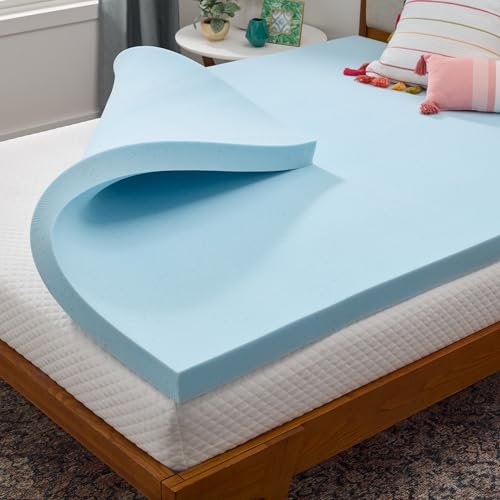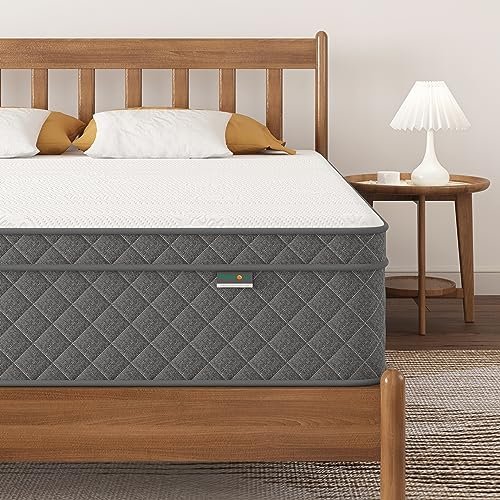
How to Stop a Wood Bed Frame from Squeaking: Your Ultimate Guide to a Silent Slumber
Waking up to a symphony of creaks and groans every time you shift in bed can turn your peaceful sanctuary into a nightly nuisance. If your wood bed frame is squeaking, you’re not alone! This common problem is usually easy to fix with a bit of patience and the right approach.
You’re in the right place! We’ll guide you through practical, actionable steps to identify and eliminate those annoying squeaks, helping you reclaim the quiet, restful sleep you deserve.
Why Do Wood Bed Frames Squeak Anyway?
Before we dive into the fixes, let’s understand why your bed might be making noise. Most squeaks come from friction where two parts of the frame rub against each other, or where a component is loose. Common culprits include:
- Loose Joints: Screws, bolts, or dowels that have come slightly undone.
- Wood on Wood Friction: Parts of the frame, slats, or headboard rubbing directly against each other without any cushioning.
- Wood on Metal Friction: Where the frame meets metal components like rails or brackets.
- Uneven Support: The bed frame isn’t sitting level, putting uneven pressure on certain joints.
- Worn Components: Over time, wood can wear down, creating gaps and opportunities for movement.
The Squeak Detective: Finding the Source of the Noise
Before you start tightening and lubricating everything, it’s crucial to identify exactly where the squeak is coming from. This step will save you a lot of time and effort!
- Start by removing the mattress and box spring (if you have one). This isolates the bed frame itself.
- Methodically press down on each joint, slat, leg, and rail of the empty bed frame. Listen carefully. Does the noise come from a specific corner? A particular slat? The headboard?
- Wiggle components: Try gently wiggling the headboard, footboard, and individual side rails.
- Check the legs: See if any legs are wobbly or not making full contact with the floor.
- Have a helper: If possible, have someone else press on different parts of the frame while you listen from various angles.
Pinpointing the exact source is the most important first step! Once you know where the sound is originating, you can target your efforts.
Step-by-Step Solutions to Silence Your Squeaky Wood Bed Frame
Now that you’ve played detective, let’s get down to fixing those noisy spots!
Step 1: Tighten Everything Up
The most common cause of squeaks is simply loose hardware. Over time, the vibrations from everyday use can loosen screws, bolts, and nuts.
- Gather Your Tools: You’ll likely need a screwdriver (Phillips or flathead) and possibly an Allen wrench or a socket wrench, depending on your frame’s hardware.
- Go Over Every Single Screw, Bolt, and Nut: Systematically check all connections on your bed frame. This includes:
- Side Rails: Where they connect to the headboard and footboard.
- Legs: Where they attach to the frame.
- Slats: If they are screwed into the frame.
- Headboard/Footboard: Any decorative or structural connections.
- Tighten them securely, but don’t overtighten! Excessive force can strip screws or crack the wood. Just aim for snug.
Step 2: Lubricate the Friction Points
Once everything is tight, if the squeak persists, it’s likely due to wood rubbing against wood (or wood against metal). Lubrication can create a barrier that reduces this friction.
- Choose Your Lubricant:
- Paraffin wax or beeswax: These are excellent for wood-on-wood contact. Simply rub the wax directly onto the offending surfaces.
- Silicone spray (non-greasy): A good option for both wood and metal joints. Spray a small amount directly into the joint.
- Dry lubricant: These are often graphite-based and ideal for metal-on-wood or metal-on-metal.
- Apply Strategically:
- Joints: Focus on the specific joints you identified as squeaky.
- Slat Ends: Apply wax or spray to the ends of the slats where they rest on the side rails.
- Connecting Points: Any area where two pieces of wood (or wood and metal) meet and rub.
- Avoid: Using greasy lubricants like WD-40, as they can attract dust and grime, and may stain or damage wood over time.
Step 3: Add Cushioning and Padding
Sometimes, lubrication isn’t enough, or you have a joint that’s simply designed to rub. Adding a soft barrier can absorb movement and prevent noise.
- Under the Mattress Slats: This is a common squeak source. Cut small pieces of felt pads, cork pads, or even old t-shirt fabric and place them under the ends of each slat where they rest on the side rails.
- Between Frame Components: If your headboard or footboard has panels that rub against the main frame, place thin felt or fabric strips in between.
- Under the Legs: If your floor is uneven, a leg might be hovering slightly, causing instability and squeaks. Place a felt pad or a small piece of cardboard under the short leg to level it out.
- Anywhere Wood Meets Wood: Look for any other areas where two pieces of wood are directly touching and could cause friction, and place a thin pad in between.
Step 4: Reinforce the Structure (The Heavy-Duty Fixes)
If the above steps haven’t completely silenced your bed, you might need to reinforce some areas.
- For Loose Dowel Joints: If your frame uses wooden dowels that have come loose, you can try disassembling the joint, applying wood glue to the dowel and its hole, and then reassembling it. Clamp it tightly until the glue dries. Only do this if you can confidently disassemble and reassemble the joint.
- Add Metal Corner Brackets: For persistently wobbly or squeaky corners, consider adding small L-shaped metal corner brackets to the inside of the frame where the side rails meet the headboard/footboard. Screw them in securely. This adds significant stability.
- Strengthen Slats: If your slats are thin or bowing, they might be the source of the noise. You can:
- Add a center support leg under the middle of your longest slats.
- Replace thin slats with thicker, sturdier ones.
- Screw the slats into the side rails to prevent movement (if they aren’t already).
Step 5: Don’t Forget Your Mattress and Box Spring!
Even a perfectly silent bed frame can get noisy if your mattress or box spring is the real culprit.
- Test Them Separately: Place your mattress directly on the floor and lie on it. If it squeaks, the mattress is the problem. Do the same with your box spring.
- Replace if Necessary: If your mattress or box spring is old and worn out, internal springs or components can break down and cause squeaks. It might be time for an upgrade.
General Tips for a Quieter Bed and Future Prevention
- Ensure a Level Surface: Make sure your bed frame is on a flat, even floor. Use shims under the legs if your floor is uneven.
- Regular Maintenance: Make checking and tightening bolts part of your spring cleaning routine. Proactive maintenance can prevent squeaks from starting.
- Don’t Jump on the Bed: While fun, this puts undue stress on the frame’s joints and can loosen them quickly.
- Check for Warping: If any part of your wood frame is significantly warped, it might be putting stress on the joints, causing noise. This might require more advanced carpentry or replacement of the warped piece.
Common Mistakes to Avoid
- Ignoring the Source: Don’t just spray lubricant everywhere. Take the time to find the exact squeaky spot.
- Overtightening Screws/Bolts: This can strip the hardware or even crack the wood, making the problem worse.
- Using the Wrong Lubricant for Wood: Greasy lubricants can stain wood, attract dust, and actually accelerate wear. Stick to wax, silicone spray, or dry lubricants.
- Giving Up Too Soon: Sometimes, a squeak can be persistent. Be methodical and patient. You might need to combine a few of these solutions to achieve perfect silence.
Enjoy Your Silent Sanctuary!
A squeaky bed can be incredibly frustrating, but with these detailed steps, you have all the tools and knowledge you need to tackle the problem head-on. By being a “squeak detective,” tightening everything up, lubricating, adding cushioning, and reinforcing where necessary, you’ll soon be enjoying peaceful, silent nights.
Patience and persistence are key. Sweet dreams!
Frequently Asked Questions(FAQ)
Q. Why do wood bed frames start squeaking?
A. Wood bed frames typically squeak due to friction between wood components, loose joints, or movement of the bed against the floor or walls. Over time, screws can loosen, wood can expand and contract, and joints can wear, creating small gaps that rub and produce noise when weight is applied.
Q. What is the very first step I should take to stop my wood bed frame from squeaking?
A. The first and most crucial step is to fully disassemble the bed frame, then reassemble it, ensuring all screws, bolts, and fasteners are tightened securely. Loose connections are the most common culprits for squeaks.
Q. How can I lubricate the joints of my wood bed frame to reduce squeaking?
A. After tightening, you can lubricate the friction points. Rub paraffin wax (candle wax), beeswax, or even a bar of soap along the joints, mortise and tenon connections, or any areas where wood meets wood. Silicone spray can also be used, but ensure it dries thoroughly.
Q. My bed frame seems to squeak from the wooden slats. How can I fix this?
A. Squeaking slats often rub against the frame or each other. Place felt pads, cork shims, old socks, or thin pieces of fabric under the ends of each slat where they rest on the side rails. You can also add non-slip rug grippers or Velcro strips to keep them in place.
Q. Could an uneven floor cause my wood bed frame to squeak, and how do I fix it?
A. Yes, an uneven floor can cause the frame to twist slightly, putting stress on joints and leading to squeaks. Use furniture leveling pads or shims under the bed legs to ensure the frame sits level and stable on the floor, preventing any rocking motion.
Q. What if the squeak isn’t the frame, but my mattress or box spring rubbing against it?
A. To isolate this, remove the mattress and box spring and test the empty frame. If the frame doesn’t squeak, the issue is likely the mattress or box spring rubbing. Place a thin blanket, felt pad, or non-slip mat between the box spring/mattress and the bed frame to create a buffer.
Q. Are there ways to reinforce my wood bed frame to prevent future squeaking?
A. For persistent squeaks, especially in older frames, consider adding L-brackets or corner braces to the inside corners of the frame, where the side rails meet the headboard and footboard. Use wood screws that are appropriate for the thickness of your frame.
Q. My wood joints seem worn and loose even after tightening. What can I do?
A. If joints are excessively worn, shims can help. Apply wood glue to the worn joint, then insert thin wood shims or even small pieces of cardboard into the gaps before re-tightening. Allow the glue to dry completely for a more permanent fix. In severe cases, professional repair or replacement of the joint might be necessary.
Q. What can I do as a temporary fix if I don’t have time for a full repair right away?
A. For a quick temporary fix, identify the specific squeaky spots and try wedging small pieces of folded fabric, cardboard, or even a stack of sticky notes into the gaps or between rubbing surfaces. This can often mute the noise until a more thorough repair can be done.
Related Articles
7 Top Full Size Bed Frames: What is the Dimensions of a Full Size Bed Frame and More!
Getting a good night’s sleep often starts with the right bed, and for many, a full-size bed is the perfect sweet spot between a twin and a queen…
How Much Is a King Size Sleep Number Smart Bed
How Much Is a King Size Sleep Number Smart Bed? Your Guide to Understanding the Investment Recommended Product: Select Comfort Air Bed Chamber for Sle…
How Much Does a Sleep Number 360 Smart Bed Cost
How Much Does a Sleep Number 360 Smart Bed Cost? Recommended Product: Sven & Son Classic Adjustable Bed Base — head and foot lift, massage, under-…



